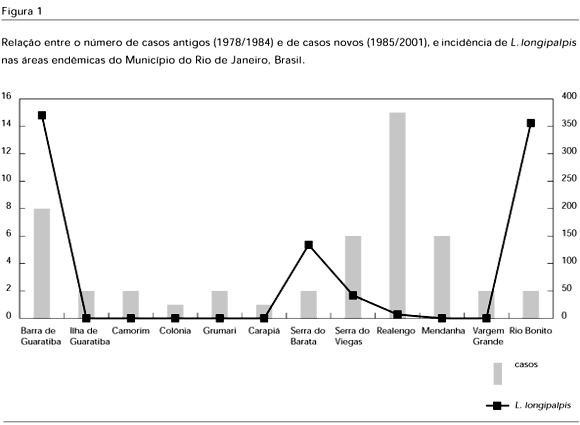The first autochthonous case of human visceral leishmaniasis (VL) in the Municipality of Rio de Janeiro was diagnosed in 1977. Since 1980, 54 autochthonous cases have been diagnosed in various locations, and since 1993 some 17 autochthonous human cases have been reported. Eight of these occurred in the neighborhood of Barra de Guaratiba and the others were distributed in the following neighborhoods: Camorim, Colônia, Grota Funda, Grumari, Ilha de Guaratiba, and Carapiá. From September 1996 to December 1999, phebotomine sandfly captures were performed at 18 sites on the mountainsides of the Pedra Branca Massif, in the Municipality, and a total of 18,303 specimens were collected, with a predominance of L. intermedia (87.33%), L. migonei (6.59%), L. longipalpis (3.10%), and L. firmatoi (1.90%). The species L. longipalpis predominated in Barra de Guaratiba (46.80%) and was absent from the other six locations where VL cases also occurred, suggesting the participation of other species like L. migonei and L. firmatoi, belonging to the same paraphyletic group of the vector species, in the VL transmission chain in the region.
Psychodidae; Visceral Leishmaniasis; Vector Control


